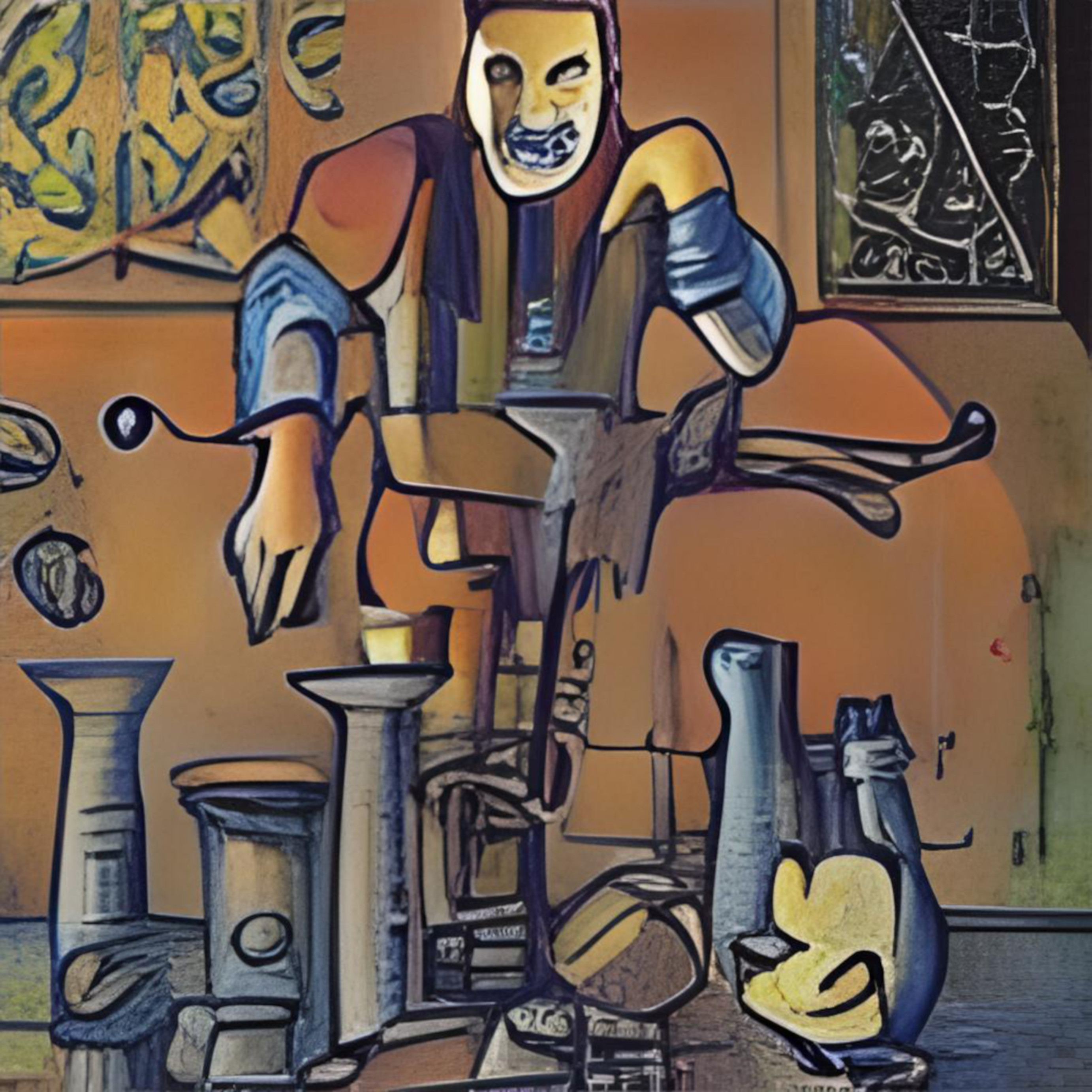Eduardo Viveiros de Castro, Cannibal Metaphysics (Univocal, 2014), 39.
The Nag Hammadi library is a collection of early Christian and Gnostic texts discovered near the Upper Egyptian town of Nag Hammadi in 1945. Their discovery significantly influenced the understanding of early Christianity in its relationships with the Hermetic tradition and Gnosticism.
Traditionally the alchemist is styled as an Artist and Philosopher, denoting the fusion of art, science, and praxis. Perhaps this is the origin of the conceptualists’ idea of the artist as philosopher? It seems that Marcel Duchamp was close to the comprehension of art as alchemy. See Arturo Schwarz, “The Alchemist Stripped Bare in the Bachelor, Even,” in Marcel Duchamp, ed. Anne d’Harnoncourt and Kynaston McShine (MoMA, 1973), 89–98. —Ed.
Viveiros de Castro, Cannibal Metaphysics, 42.
See Karl Marx as a Religious Type (1906) by the former Marxist Sergei Bulgakov, in which Marxism is construed as a variety of immanentism, i.e., a variety of religious consciousness that denies the principle of transcendence; Eric Voegelin’s essay “From Enlightenment to Revolution” (1975), which interprets Marxism as a secular Gnosticism; British Marxist Cyril Smith’s Karl Marx and the Future of the Human (2005), which asserts that Marx may only be understood through the lens of the mystical-Hermetic conception of man, which forms the core of his ideas; Hegel and the Hermetic Tradition (2008) by Glenn Alexander Magee, which demonstrates convincingly that Hegel’s speculative philosophy is a specific avatar of Hermetism; as well Erica Lagalisse’s recent book Occult Features of Anarchism (2018), which analyzes the close connection between the antiauthoritarian movement of the New Era and Gnostic/Hermetic philosophy. I will, moreover, point to numerous contemporary convergences of magic and neo-paganism and Marxism (Rhyd Wildermuth, among others), and to Andy Merrifield’s book Magical Marxism (2011), an attempt to restore Marxism to its original power of the imagination—a central power in Hermetism. All these references to relevant books, along with the brief description of the core of the Gnostic/Hermetic tradition as a subversive chromatic (i.e., immanentist dual-nondual) praxis aimed at achieving freedom from determination, omnipotence, and immortality through man’s inherent divine nature, are merely concessions to the potential skeptic, who (still) doubts the (still) incredible fact that Marxist theory may be construed as a specific variety of Gnosticism/Hermetism.
Karl Marx, “Reflections of a Young Man on the Choice of a Profession,” in Marx/Engels Collected Works, vol. 1 (Lawrence & Wishart, 2010), 3.
Marx, “Reflections of a Young Man,” 8.
We understand the Gnostic/Hermetic tradition as the core of so-called “Western esotericism.” It apparently appears in the first centuries of the common age as Gnosticism and Hermeticism and immediately goes underground as a rival of conventional Christianity, and later, science. From time to time it comes to the surface, for example during the Renaissance, the Romantic era, on the eve of the Russian Revolution, and after the 1960s. Its ideas are also found in many contemporary antiauthoritarian movements. The basic idea uniting various Gnostics/Hermetics is that human beings must emancipate themselves and the whole world from improper rulers, to gain freedom through revolution (spiritual, political, or both) and realize true all-unity as their own and the world’s divine essence.
“Proceedings of the Sixth Rhine Province Assembly, Article 3,” in Marx/Engels Collected Works, vol. 1, 230.
Gnostic/Hermetic anthropology continually presents nondual androgynous pairs, just as nondual twins occur in the cosmological egg of the Dogons, as the French anthropologists Marcel Griaule and Germaine Dieterlen describe in their 1965 book The Pale Fox. Such pairs are described not exclusively and dually, but intensively and inclusively, appearing, in the words of Viveiros de Castro, as “minimal forms of distinction,” arising as intensities in the nondual chromatism of becoming. In Hermeticism, the intensive pairs or syzygies operate, on the one hand, as tensioned strings, between which becoming is realized— i.e., they act as attractors of the process—and on the other as generators of multiplicity, as assurance that the world is multiform and exists generally—i.e., the One progresses into the world and as the world by virtue of the generation of differences, organized into androgynous intensive pairs. So too man exists, on the one hand, as Anthropos—Aeon of the fourth syzygy—in essence, God and his emanation, and on the other, as earthly man—a creature of dual (at once spiritual and material) nature. One of them is free from determination and is spiritual, while the other remains in the process of declining/becoming. The link between the two modes of human existence ensures that earthly man, in all his individualized multiplicity, will come together as Purusha, Adam Kadmon, or Anthropos, the Man-God. This transition occurs as inner intensity.
“Proceedings of the Sixth Rhine Province Assembly, Article 3,” 262. Emphasis in original.
“Proceedings of the Sixth Rhine Province Assembly, Article 3,” 230.
“Proceedings of the Sixth Rhine Province Assembly, Article 1,” in Marx/Engels Collected Works, vol. 1, 148. Emphasis in original.
Karl Marx, “Economic and Philosophical Manuscripts of 1844,” in Marx/Engels Collected Works, vol. 3 (Lawrence & Wishart, 2010), 281.
Giovanni Filoramo, A History of Gnosticism (Basil Blackwell, 1993), 151.
“Proceedings of the Sixth Rhine Province Assembly, Article 3,” 257.
Filoramo, History of Gnosticism, 106.
“Letter from Karl Marx to Arnold Ruge, Cologne, May 1843,” in Marx/Engels Collected Works, vol. 3, 137, 141.
“Letter from Karl Marx to Arnold Ruge, Kreuznach, September 1843,” in Marx/Engels Collected Works, vol. 3, 144.
Karl Marx, “Critique of Hegel’s Philosophy of Right” (1843), in Marx/Engels Collected Works, vol. 3, 186. Emphasis in original.
Karl Marx, “A Contribution to the Critique of Political Economy” (1859), in Marx/Engels Collected Works, vol. 29 (Lawrence & Wishart, 2010), 263–64.
Marx, “Critique of Hegel’s Philosophy of Right,” 12. Emphasis in original.
See Glenn Alexander Magee, Hegel and Hermetic Tradition (Cornell University Press, 2008), 80.
Y. Verniére, Symboles et mythes dans la pensée de Plutarche (Les Belles Lettres, 1977), 75. Quoted in Filoramo, History of Gnosticism, 50.
Translated from the Russian by Sergey Levchin.
